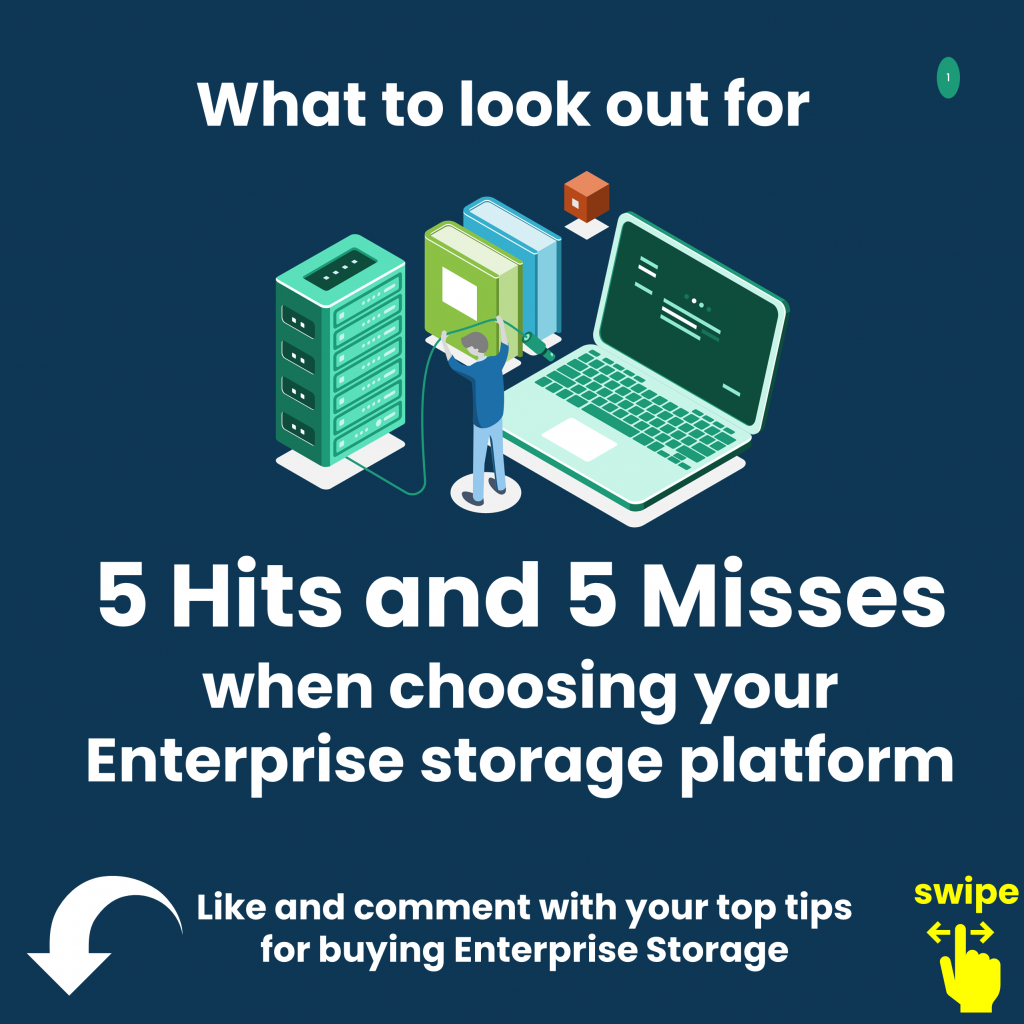Here’s a LinkedIn carousel post that I published in January as we head into 2023. A few tips for procurement teams when thinking about going to market for their enterprise storage platforms.
Here’s the essence of my advice:
Here is my list of the most critical things to consider:
- Look for a vendor’s ‘EFFECTIVE’ capacity and ask for a Right Size Guarantee
- Built-in anti-ransomware features like immutable snapshots and DARE included as default (Data At Rest Encryption)
- Flexible models that allow you to pay for only what you consume and can ramp-up and ramp-down as your business transforms
- Storage that constantly evolves, is updated with included features and can be upgraded (HW/SW) in-place non-disruptively
- TCO models 6 years and longer, with no more disruptive and expensive forklift data migrations
And what you should be avoiding:
- Watch out for unreasonable caveats or the inclusion of snapshots, clones and thin provisioning in the ‘effective’ calculation
- Special drives and extra cost for encryption features and licenses
- Models that appear flexible, but underneath are just traditional ‘leases’ that can only grow and have unwanted termination costs
- Vendors that license and charge for the features & functionality that you actually need as standard
- TCO illustrations that conveniently miss the cost, risk, and disruption of more storage renewals and migrations in 4-5 years
Hope these tips are useful – if you have your own, then please share in the comments.
![]()
You may also like
-
What does the 1984 The Terminator movie and the 2024 EU AI Act have in common?
-
A Tale of Two Transformations
-
With Pure Storage’s recently announced extended partnership with Microsoft Azure – You might be thinking “Why on earth would Azure want their customers to reduce their cloud spend?” What’s in it for Microsoft?
-
A Perfect Storm for Tech Innovators.
-
UNPOPULAR OPINION: The recent super high electricity costs are a good thing…
 Are you expecting a lower pay rise next year
Are you expecting a lower pay rise next year  What does the 1984 The Terminator movie and the 2024 EU AI Act have in common?
What does the 1984 The Terminator movie and the 2024 EU AI Act have in common?  A Tale of Two Transformations
A Tale of Two Transformations  With Pure Storage’s recently announced extended partnership with Microsoft Azure – You might be thinking “Why on earth would Azure want their customers to reduce their cloud spend?” What’s in it for Microsoft?
With Pure Storage’s recently announced extended partnership with Microsoft Azure – You might be thinking “Why on earth would Azure want their customers to reduce their cloud spend?” What’s in it for Microsoft?  A hug, a kiss, a shake, a bro-hug?
A hug, a kiss, a shake, a bro-hug?  A Perfect Storm for Tech Innovators.
A Perfect Storm for Tech Innovators. 